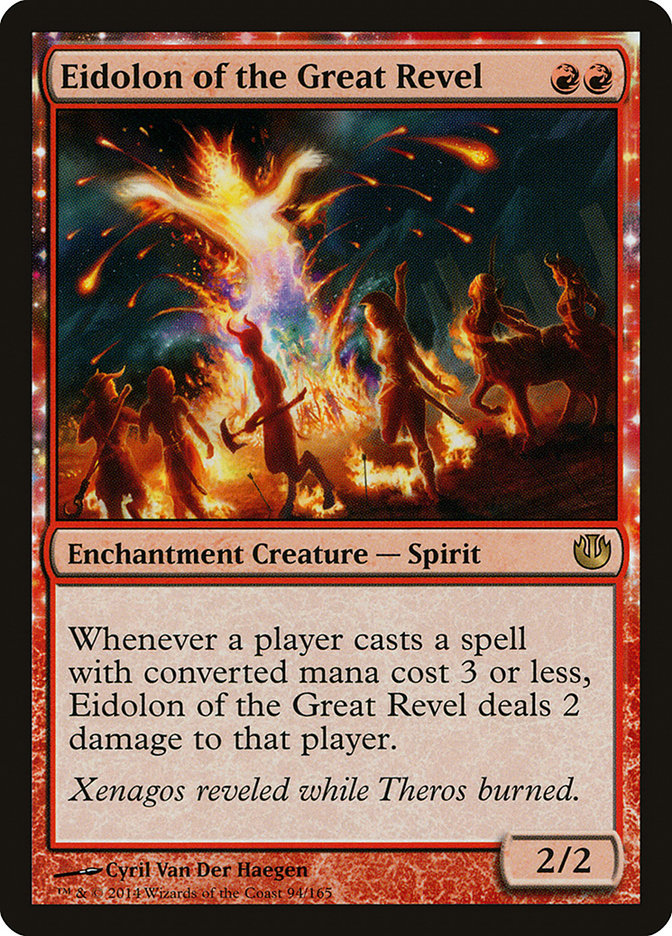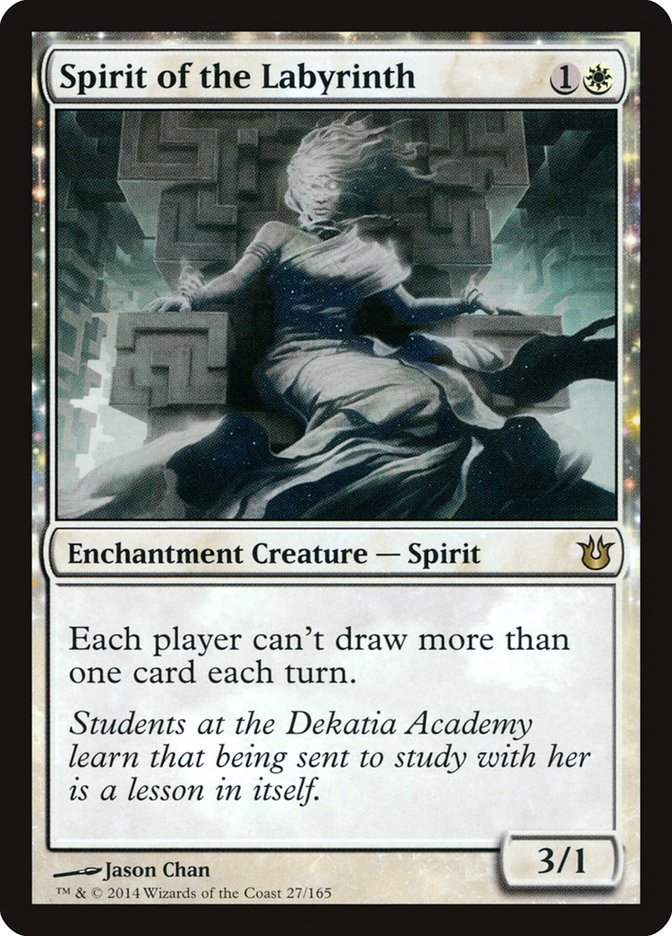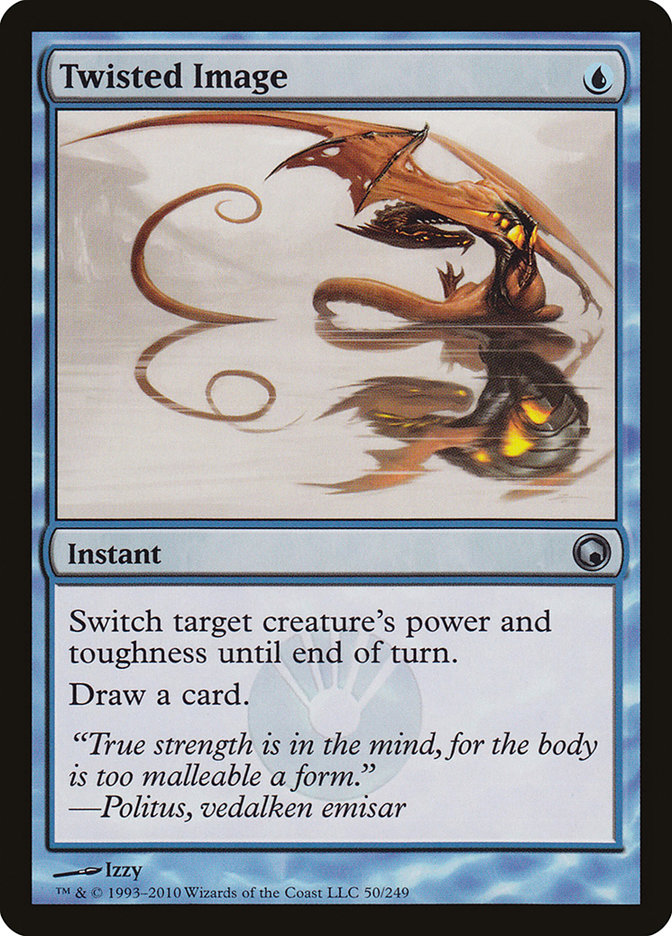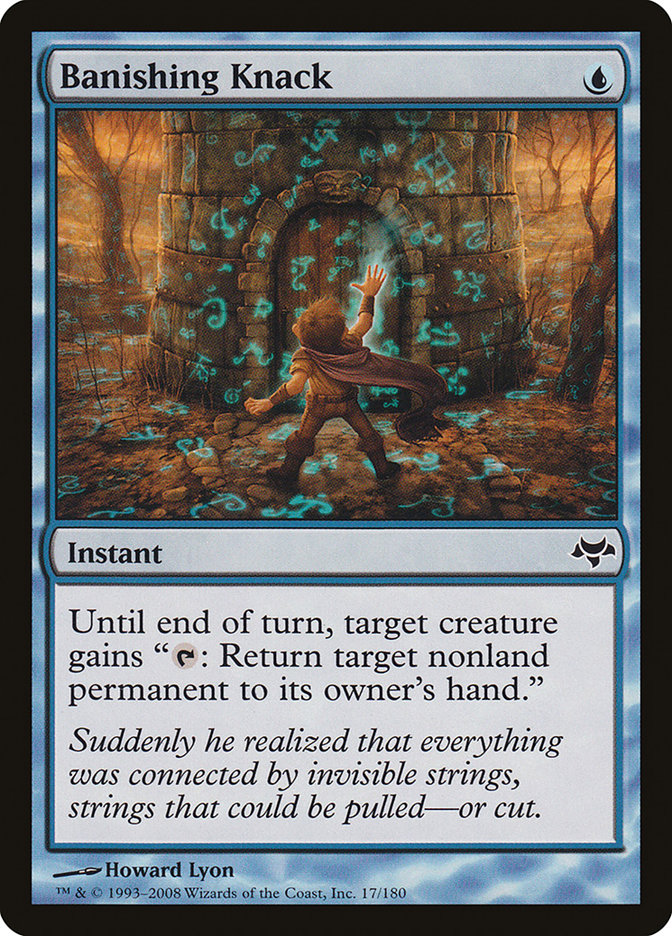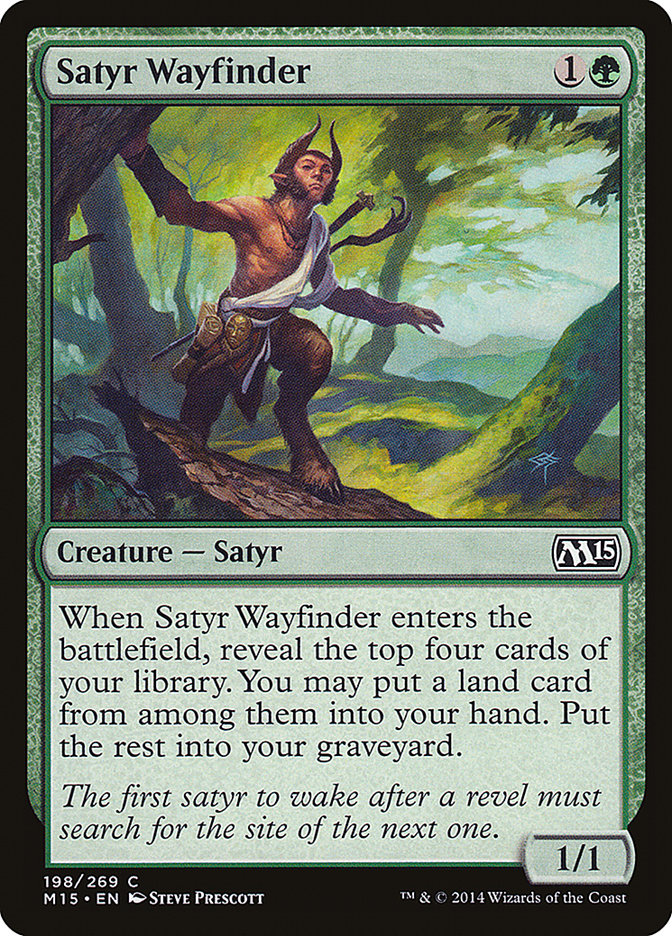Khans of Tarkir is an absurd set for Eternal formats. The power of delve has been written about to death, so I’m only going to touch on it briefly.
Treasure Cruise is a more powerful and better card than Ancestral Vision, a banned card, Dig Through Time is better than Treasure Cruise, and Jeskai
Ascendancy is better at breaking the mission statement of Modern (turn 4+ kill) than almost any card ever. I’d say that all of these should be banned based
on their power level relative to the current banned list, but I don’t think that’s very likely, and I’ve thought Ancestral Vision shouldn’t be banned
anyway, so Treasure Cruise and Dig Through Time might be fine (though at this point, I’d say we should go ahead and unban Ancestral Vision).
Beyond those absurd cards, Khans of Tarkir has a lot of normal Magic cards that are both interesting and powerful–Monastery Swiftspear, Seeker of the Way,
Murderous Cut, and possibly several gold cards. I kind of love Khans, but it also kind of feels like a set that’s early in development, and at any point
they might just say, “oops, these mechanics were broken” and take it all back. The reality, as hard as it can be to grasp, is that these cards are here to
stay (almost all of them at least, and maybe even all of them), and we need to figure out how to deal with it.
The important Khans cards are mostly fairly obvious, and many have been discussed at length. Also, when you want to figure out what new cards were added to
the format, it’s easy to just read through the spoiler. With a format as large as Modern, it can be hard to think of all the old cards that might have
changed value when a new set comes out, so today I’m going to go through a few older cards that may have new relevance in a world with Khans of Tarkir.
Prowess (including Jeskai Ascendancy) and delve are the most broken Khans of Tarkir mechanics, and both of them encourage players to cast a lot of cheap
spells. Treasure Cruise and Dig Through Time threaten to take over late games with their incredible efficiency starting at around turn 4. Decks that play
them have to spend the early turns casting cheap cards to fill their graveyards, and have reduced options on the first few turns due to having a card they
can’t cast yet in their hand.
Eidolon of the Great Revel both directly attacks the cards that support these mechanics, and strategically functions on exactly the right axis to punish
people who are trying to use these cards–the way to fight efficient lategame card draw is by killing your opponent before they can do that, and Red
Aggro/Burn may be the best positioned deck to do that, largely because of Eidolon of the Great Revel.
The idea here is much the same. Play an aggressive deck that has efficient creatures that attack your opponent’s gameplan while they attack your opponent.
There are a lot of reasons to play blue cantrips right now, and each of those is a reason to play Spirit of the Labyrinth.
This zero mana instant can allow you to pump a prowess creature your opponent doesn’t think you can pump if you’re playing Monastery Swiftspear or Seeker
of the Way. It kills the all-important mana accelerants in Jeskai Ascendancy and Birthing Pod strategies, and it has no shortage of targets in Affinity,
another extremely popular deck. Strategically, when your plan is to spend mana casting cantrips so that you can spend mana drawing cards, you can fall back
if you don’t have cheap ways to impact the board. It doesn’t get cheaper than Gut Shot, and it’s hard to get high impact on the board than killing a
creature. Deathrite Shaman’s second toughness did a lot to keep this once popular Standard card largely out of Modern, but I think it’s a great inclusion
in blue decks now, especially if people start playing Spirit of the Labyrinth.
This is about as obvious as it gets. I mentioned the idea of spending mana to draw cards and enable delve, and this is clearly the best way to do that.
While Serum Visions, Sleight of Hand, and Gitaxian Probe generally get the nod over Thought Scour due to giving you more selection, Thought Scour’s synergy
with delve is powerful enough that it should make substantial gains in the market share of one mana blue card draw spells.
A side effect of this is that it makes Snapcaster Mage better, and it also makes counterspells in general better–increasing the number of instants means
you can generally play a more reactive Snapcaster Mage game, which means you can play more counterspells than you could if you were planning to use
Snapcaster Mage on sorceries more of the time.
This is better than other counterspells at enabling your delve, since it draws a card to keep the fuel coming, it gains positioning with Snapcaster Mage
and Thought Scour as discussed above, but most importantly, it is by far the best answer to delve spells. When you Remand a Treasure Cruise or Dig Through
Time, your opponent has still lost all the cards exiled to cast it, so they likely won’t be able to cast it again soon. I suspect a huge amount of the play
between blue decks going forward is going to revolve around trying to Remand your opponent’s Dig Through Time and sneak yours through their Remand.
There once was a time when basically everyone played four copies of Disenchant in their starting sixty. That’s not really something you can do in Magic
these days, but I think we’re getting to the point where playing a few copies of Wear//Tear has a lot of upside. Just think about the number of decks that
make it clear just in their name that this card will have important targets: Birthing Pod, Splinter Twin, Jeskai Ascendancy, Amulet, Affinity. The rise of
Ensoul Artifact in Affinity means this will sometimes be a two-for-one, which is outstanding. Even in the decks that don’t revolve around artifacts or
enchantments, there will usually be good targets like Eidolon of the Great Revel and Courser of Kruphix. Whatever your plan is, there are often artifacts
and enchantments that are great against you, so you’re going to want these against almost everyone in games 2 and 3 anyway. Maybe it’s time to save some
sideboard space and just put these in the maindeck.
Delve is a graveyard mechanic, but it doesn’t care much about a lot of kinds of graveyard hate. Relic of Progenitus is highly effective against it, but
they’ll still usually get to the point there they can cast their delve spells at a reasonable cost unless you have multiple Relics. Rest in Peace basically
just traps every delve card in their hand while doing all its usual work shutting down basically everything fun in Magic. If the threat of Remand and other
hate scares you off of playing delve cards yourself, and you can minimize your reliance on the graveyard, maindeck Rest in Peace should serve you quite
well.
This card gains a little value in a lot of spots. First and most importantly, having another popular deck that plays eight 0/1 mana creatures means you get
more massive blowouts with the card. Second, Snapcaster Mage + Thought Scour pushing toward an instant speed game means you’re incentivized to try to make
more of your cantrips/instants. Third, prowess means you’re more likely to play a deck that wants to have creatures in play early and play cantrips, which
helps to reduce the risk of Twisted Image that you won’t be able to cycle it. Moreover, it’s particularly good with Monastery Swiftspear, since it flips
the stats to deal an extra damage.
This one is a little more narrow and speculative. Banishing Knack is the forgotten ancestor to Retraction Helix, a card that happens to be incredibly
powerful with Jeskai Ascendancy. There’s more than one way to go off with Jeskai Ascendancy. Two weeks ago I focused on using it to make every one mana
spell free with a mana creature, but you can also use it with Retraction Helix or Banishing Knack to infinitely bounce a zero mana artifact, generating as
many +1/+1s and looks as you want. You can even do this through Ethersworn Canonist. What this means is that Jeskai Ascendancy combo doesn’t have to play
mana creatures. It doesn’t even have to play cantrips. The deck could look almost completely different and still almost always win whenever it casts Jeskai
Ascendancy with a creature in play and a mana available. It might not be the best approach, but you can actually just drop this combo into a heroic/prowess
aggro deck, or build a non-green dedicated combo deck with whichever creatures you happen to think are best. Don’t forget about the synergy with
Blistercoil Weird when you’re looking at prowess creatures.
Let me end with a nod to my latest pet card, a true champion at enabling delve. This card offers a bit of a board presence and some mana fixing while
turbocharging any delve spells you might have. It also resets the top of your library for Courser of Kruphix, if you happen to have that one in your deck,
and it’s great at getting random card types in the graveyard for Tarmogoyf, who has some tension with delve, but likely more synergies with the delve
enablers.
I’m excited about the possibility of a U/G/x Midrange/Control deck with Tarmogoyf, Snapcaster Mage, Satyr Wayfinder, Courser of Kruphix, Thought Scour,
Remand, and Dig Through Time. Splice whatever efficient answers you want into that shell, and you’ll have access to whatever you need thanks to Snapcaster
and the graveyard filling, Courser of Kruphix + a fetchland for card selection, and Dig Through Time. Win through pure card advantage or add any singleton
you happen to want to kill with.
I’m not generally one for a top ten list, but those are ten cards to watch moving forward in Modern.
As always, the point I’m really trying to make is the point anyone who skims the article for the list might miss–it’s not really the exact cards that I
think are important, but the weight of how much delve impacts Modern, and how the decisions that support it cascade, both in terms of card selection in
decks that use it and the metagame that exists to fight it.
I’ve kind of rolled the cheap, aggressive prowess creatures into the presumed impact of Khans while explicitly stating that delve is busted. Prowess isn’t
the same way, but I can get away with this partially thanks to Bob Huang’s Legacy win that featured both mechanics. The reason
Monastery Swiftspear seems so important to me is because it’s a great aggressive creature, and I think those are potentially well positioned in the format
moving forward if you can make the decks powerful enough to actually win before the delve decks take over.
Modern is suddenly in an interesting place where the metagame has been shaken up enough that we need to figure out just how good the new decks are and what
the best ways to fight them are. While everyone’s distracted with that, sometimes solid, powerful decks can win by punishing people for needing to take
time to tune their new brews. I think this is highlighted by the early Daily Events on Magic Online with Khans of Tarkir, where what we’re seeing isn’t the
dominance of Jeskai Ascendancy and delve, but strong performances by traditional good decks like Affinity. It will take some time, but I do think Modern
will change. Grand Prix Madrid will be the first major event where we’ll see the new world of Modern, which will set the stage for the World Championships
the first week of December. I’m excited to see where Modern goes for the first time in over a year.

